Safdarjung’s Tomb, built in 1754 in New Delhi, is a notable example of late Mughal architecture and serves as the mausoleum of Nawab Safdarjung. The tomb is constructed from red sandstone and marble, featuring a central dome, arched entrances, and intricate ornamentation, reminiscent of the earlier Humayun’s Tomb. The monument is set within a sprawling Charbagh-style garden, symbolising the Islamic concept of paradise. Though it marks the decline of Mughal architectural grandeur, Safdarjung’s Tomb remains a significant cultural and historical landmark.
Location
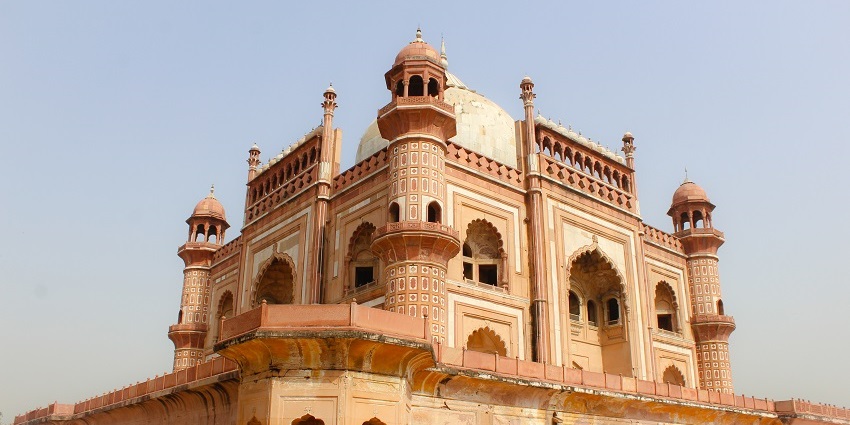
Photo: Sivvarapu harish / Wikimedia Commons
Safdarjung Tomb is situated in the heart of New Delhi at the intersection of Safdarjung Road and Aurobindo Marg, close to the Lodhi Estate area. The tomb is easily accessible from various parts of the city and is a short drive from the iconic India Gate and the bustling Connaught Place. Surrounded by lush greenery, the tomb offers a peaceful retreat amidst the urban landscape. Safdarjung Tomb timing is from 9 AM to 7 PM.
Suggested Read: Things To Do In Delhi Where You Can Explore The Capital City’s Rich Heritage
How To Reach Safdarjung Tomb
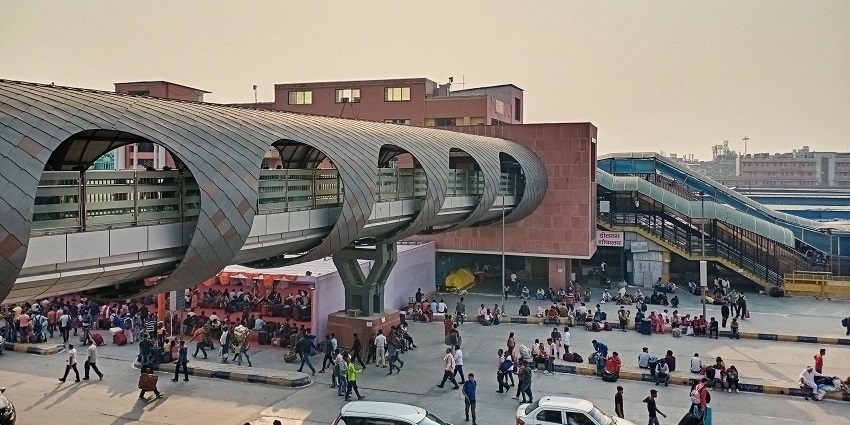
Photo: Pulakit / Wikimedia Commons
You can easily each Safdarjung Tomb through rail, road or air:
By Air: Indira Gandhi International Airport is the nearest airport by which tourists can reach Delhi.
By Rail: The nearest railway station is New Delhi railway station, just 7.3 kms away. The nearest metro station to Safdarjung Tomb is Jor Bagh on the Yellow line of the Delhi Metro. From Jor Bagh station, it’s about a 15-minute walk or a short auto-rickshaw ride to the tomb.
By Road: Several DTC (Delhi Transport Corporation) buses pass near Safdarjung’s Tomb, with stops at nearby landmarks such as Lodhi Garden or Safdarjung Airport. From these stops, the tomb is within walking distance. If you’re driving or taking a taxi/auto-rickshaw, you can use Safdarjung Road or Aurobindo Marg to reach the tomb.
Places To Visit In And Around Safdarjung Tomb
Here are the various places to visit in and around Safdarjung Tomb:
1. Lodhi Gardens
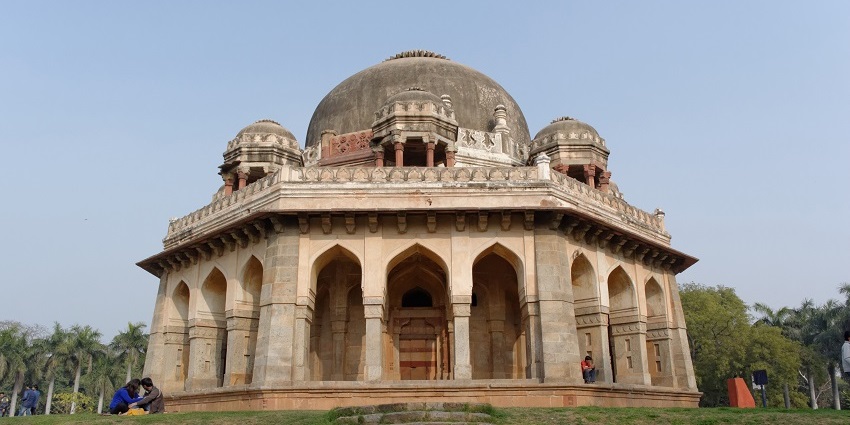
Photo: Slyronit / Wikimedia Commons
Lodhi Gardens is a historic park that spans over 90 acres and offers a serene escape. The gardens are home to several significant tombs and architectural works from the Lodhi dynasty. Among the key monuments are the tombs of Sikandar Lodi and Muhammad Shah, which are fine examples of Indo-Islamic architecture. The park’s well-maintained lawns, flowerbeds, and water bodies provide a tranquil environment. The garden’s design is a blend of British landscaping and Mughal-inspired garden architecture. Visitors encounter a mix of open spaces and wooded areas, interspersed with historical structures such as the Bara Gumbad (Big Dome) and Sheesh Gumbad (Glass Dome).
Location: Lodhi Road, Lodhi Estate, New Delhi
Famous For: Natural beauty and historical significance
Timings: 6 AM – 7:30 PM
Suggested Read: Places To Visit In Delhi For Fun To Enjoy A Thrilling Time
2. National Rail Museum
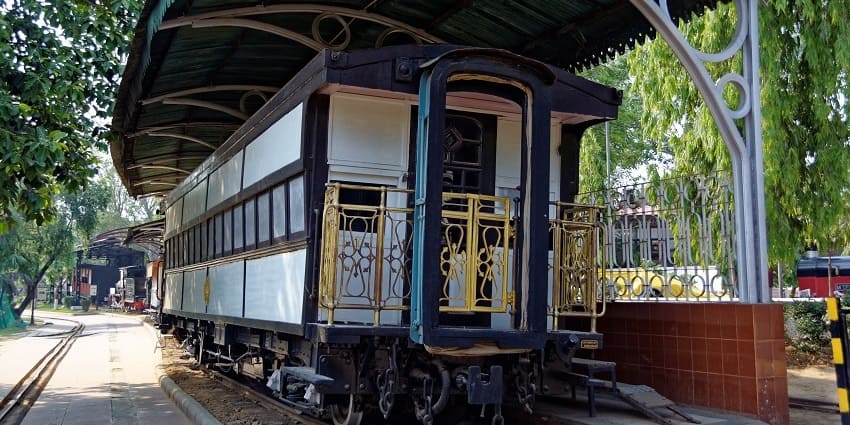
Photo: Slyronit / Wikimedia Commons
The National Rail Museum is a unique institution dedicated to showcasing the rich history and heritage of India’s railways. The museum offers a fascinating glimpse into the development of one of the world’s largest and oldest railway networks. The museum’s collection is vast and varied, featuring over 100 real-size exhibits of Indian Railways. Among the highlights are vintage steam locomotives, old carriages, and saloon cars used by Indian royalty and British officials. One of the most iconic exhibits is the Fairy Queen, the world’s oldest working steam locomotive built in 1855 and still operates occasionally.
Location: Chanakyapuri, New Delhi
Famous For: A collection of vintage locomotives, carriages, and railway artefacts including the historic Fairy Queen
Timings: 10 AM – 5 PM
3. Humayun’s Tomb
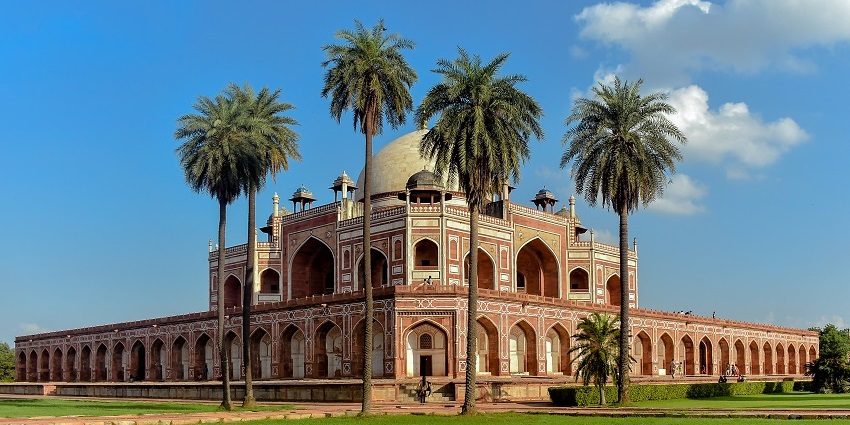
Photo: User:Eatcha / Wikimedia Commons
Photo: Humayun’s Tomb, located in New Delhi, is a monumental example of Mughal architecture and a UNESCO World Heritage Site. This tomb is the final resting place of Mughal Emperor Humayun and was commissioned by Humayun’s widow, Empress Bega Begum. It stands as an early and influential example of Mughal tomb architecture. The architecture of Humayun’s Tomb is characterised by its grand scale and intricate design. The tomb is set within a vast Charbagh garden, a traditional Persian-style garden divided into four parts by water channels. The central dome, made of red sandstone and marble, rises impressively above the surrounding gardens.
Location: Nizamuddin East, New Delhi
Famous For: Magnificent Mughal architecture
Timings: 6 AM – 6 PM
Suggested Read: Places To Visit In Delhi With Friends For Fun And Entertainment
4. Khan Market
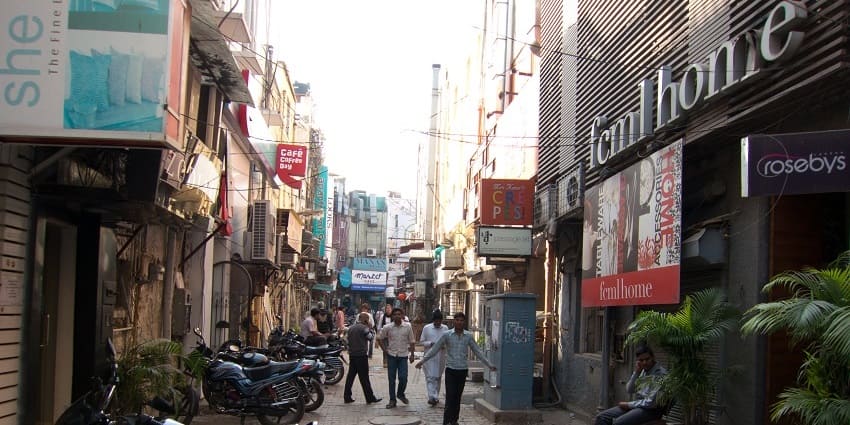
Photo: Geoff Stearns / Wikimedia Commons
Khan Market is one of the city’s most upscale and vibrant shopping districts. Established in the 1950s, it has grown to become a prime retail destination, offering a mix of high-end boutiques, renowned brands, and unique shops. The market is named after Khan Abdul Jabbar Khan, a prominent figure in the Indian independence movement. Over the decades, Khan Market has evolved into a hub for both locals and tourists seeking quality goods and a distinctive shopping experience.The market is divided into two main sections: the main market area and the more exclusive “Khan Market Extension.”
Location: Khan Market, New Delhi
Famous For: Shopping experience
Timings: 10 AM – 8 PM
5. Rashtrapati Bhavan
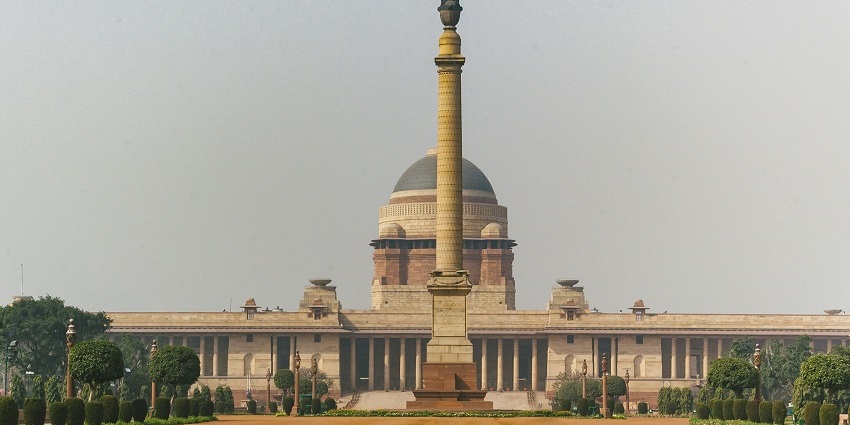
Photo: Matthew T Rader / Wikimedia Commons
Rashtrapati Bhavan is the official residence of the President of India and a significant symbol of the Indian Republic. Completed in 1929, it was originally known as the Viceroy’s House and served as the residence of the British Viceroy during the colonial period. Designed by British architect Edwin Lutyens, the building showcases a blend of classical and Indian architectural styles, with its grand dome, extensive colonnades, and detailed carvings reflecting a fusion of Western and Indian elements.The architectural design of Rashtrapati Bhavan is notable for its large central dome, which is modelled after the St. Peter’s Basilica in Rome.
Location: Rashtrapati Bhavan, President’s Estate, New Delhi
Famous For: Grand architecture
Timings: 9 AM – 4 PM
Suggested Read: Top Places To Visit In Delhi For Every Type Of Traveller
Where To Stay
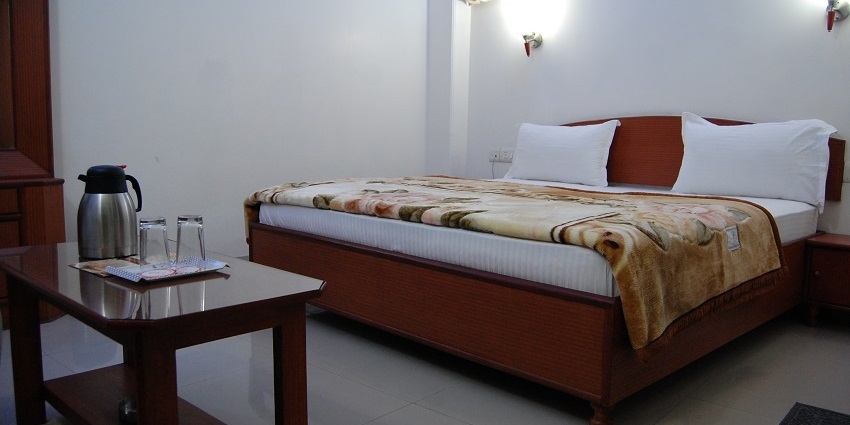
Photo: sharmahouse / Wikimedia Commons / Image For Representation Only
When visiting New Delhi, there are a variety of accommodation options to suit different preferences and budgets. For a luxurious stay, the Taj Mahal Hotel and The Leela Palace offer top-notch amenities and exceptional service in central locations. If you prefer a more boutique experience, the Haveli Dharampura and The Claridges provide charming atmospheres with personalised touches. For budget-conscious travellers, areas like Paharganj and Karol Bagh offer numerous affordable hotels and guesthouses. Additionally, staying in the Connaught Place area provides easy access to shopping, dining, and cultural sites, making it a convenient choice for exploring the city.
Where To Eat
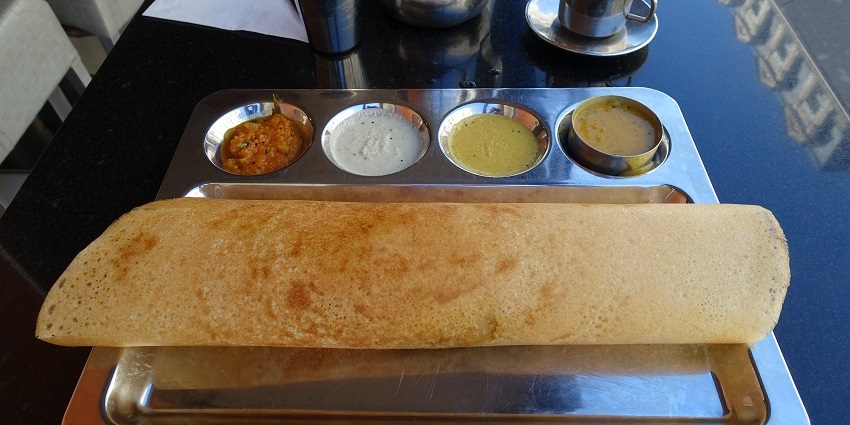
Photo: Guilhem Vellut / Wikimedia Commons
New Delhi offers a diverse culinary scene with something to suit every palate. For a taste of traditional Indian cuisine, Bukhara at the ITC Maurya is renowned for its robust flavors and grilled specialties. Indian Accent provides a modern twist on classic dishes with inventive presentations. For street food enthusiasts, Connaught Place and Chandni Chowk are must-visit areas, where you can enjoy delicious chaat, kebabs, and sweets from local vendors. If you’re in the mood for international cuisine, The Olive Bar & Kitchen and Saravana Bhavan offer a range of options from Mediterranean to Italian delicacies.
Suggested Read: Things To Do In Delhi In One Day For A Memorable Trip
Other Factors To Consider
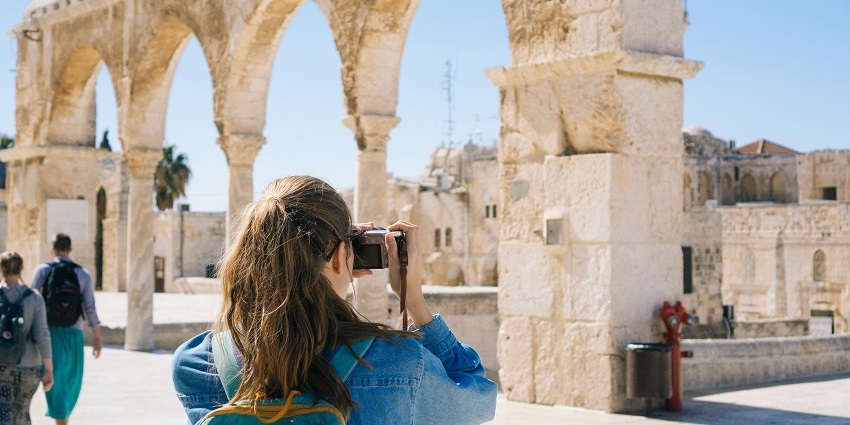
Photo: Haley Black / Pexels / Image For Representation Only
Safdarjung Tomb ticket price are ₹15 for Indians and ₹200 for foreigners. You can click Safdarjung Tomb photos to keep as a souvenir for memories.
Tips For Travellers:
- Check the opening hours and any closures particularly on public holidays or Mondays when some places might be closed.
- Carry sufficient cash or a card for payment, as some places may not accept digital payments.
- Expect security checks at major tourist sites.
- Avoid carrying large bags, sharp objects, or prohibited items to expedite the entry process.
Safdarjung Tomb is a great place to learn about the past. Exploring this place with your loved ones cab be a memorable experience. Safdarjung Tomb history attracts tourists from all over the nation to delve into the cultural significance of the same. So, what are you waiting for? Pack your bags and plan your next trip with TripXL now and enjoy your exploration in Delhi.
Cover Photo: Arjunfotografer / Wikimedia Commons


 WhatsApp
WhatsApp
 Twitter
Twitter









